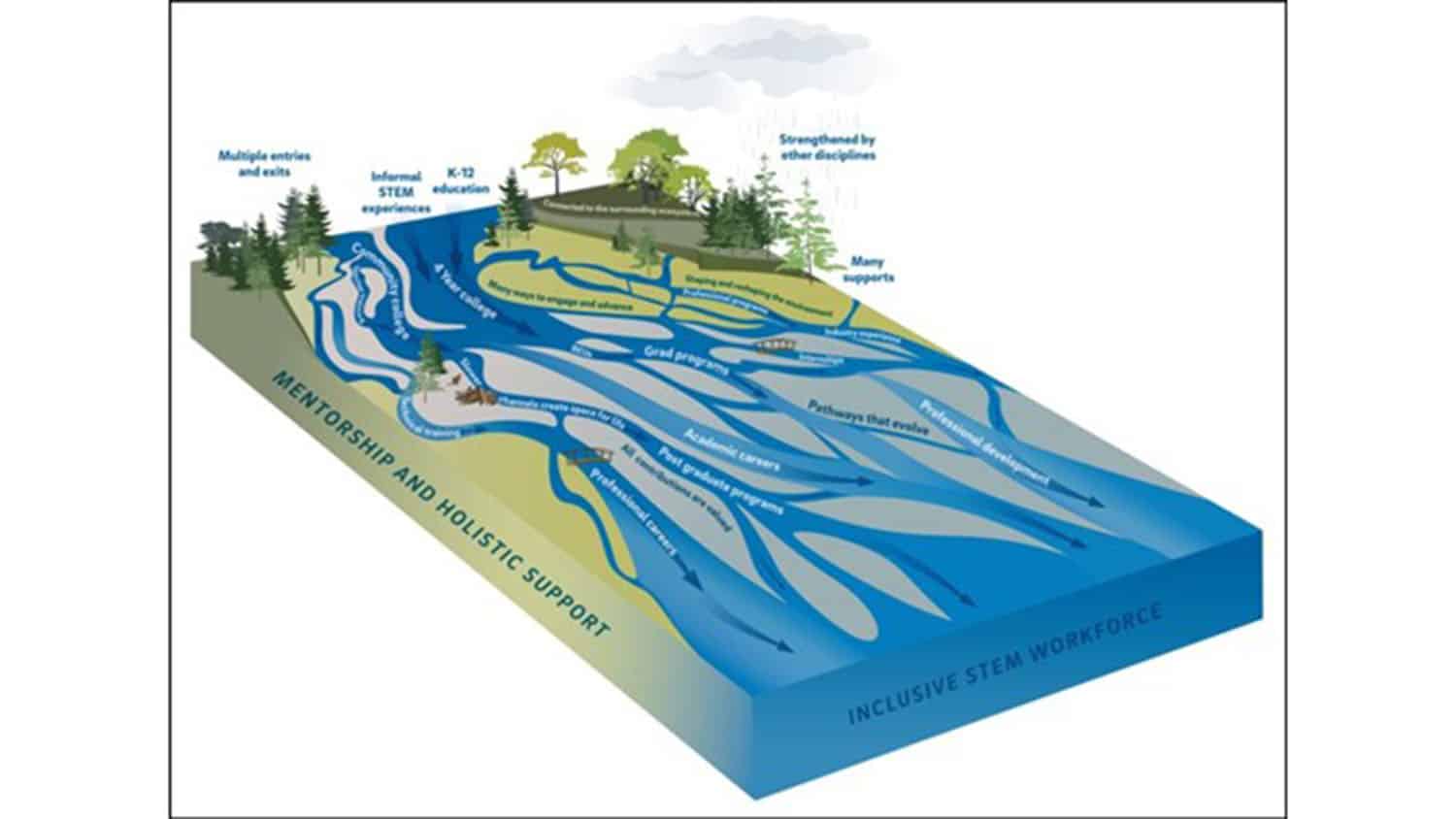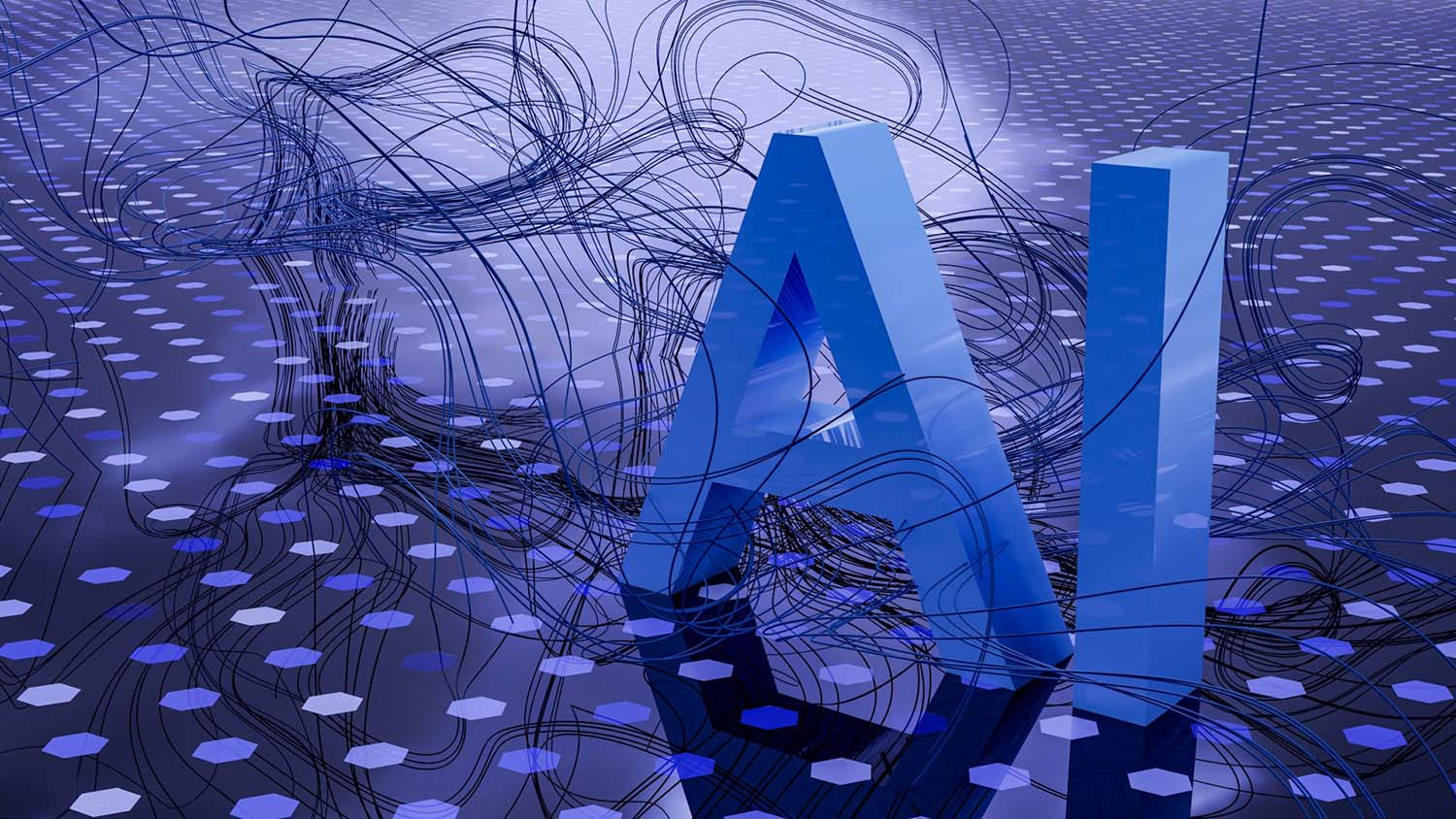How Do You Create New Career Paths for the STEMM Workforce?

Global challenges, from climate change to the COVID pandemic, underscore the importance of research in the fields of science, technology, engineering, mathematics and medicine (STEMM). But how do you cultivate a workforce that supports efforts in those fields?
The American Association for the Advancement of Science has established a new interdisciplinary team focused on improving access to the STEMM workforce and helping people navigate STEMM careers. The team, called the AAAS Empowering Career Pathways Multidisciplinary Working Group, will present its findings at the AAAS conference being held in Denver, Colorado, in February 2024.
To learn more about the working group, and what it is trying to accomplish, we talked with Joel Ducoste – a member of the working group, associate dean for faculty advancement in NC State’s College of Engineering and a professor in the college’s Department of Civil, Construction, and Environmental Engineering.
The Abstract: What exactly is the AAAS Empowering Career Pathways Multidisciplinary Working Group? What is it trying to accomplish?
Joel Ducoste: Officially, AAAS Multidisciplinary Working Groups (MWGs) are AAAS’s way to leverage the strengths of a multidisciplinary group of experts to provide strategies for how to make progress on a range of topics that are important to the constituencies that AAAS serves. In particular, AAAS hopes that these MWGs will address timely and high-impact issues, with the goal of developing actionable steps to enact change in science, technology, engineering, mathematics and medicine (STEMM).
The Empowering Career Pathways in STEMM MWG (ECP MWG) is being asked to help address the following major issues that have presented barriers to individuals entering STEMM careers, as well as challenges associated with retaining talent:
• Exclusionary practices that limit entry points or access into STEM careers
• Disincentives for individuals wanting to make career changes
• Unrealistic goals for success in STEMM professions
• Disconnects between formal training or education and on-the-job competencies.
TA: Why did the AAAS convene the group?
Ducoste: Frankly, I think AAAS convened the group because they are very interested in providing access along multiple pathways to a STEMM career. If we do this correctly, we will make lifelong learning truly a reality, with easy access and accumulation of knowledge that will allow anyone with desire and training to make an impact in STEMM. I also believe it is about providing access to those who, through no fault of their own, are not provided the opportunity to receive the training needed to enter a STEMM discipline (k-12 school access, family support, racism/sexism/isms, bias, etc.). The world can no longer afford to exclude potentially capable people that are trained in data analysis to discover or solve problems that have been identified in our grand challenges of engineering or are part of the United Nations’ sustainable development goals. We are at a tipping point of just creating marginal or incremental solutions. We need radically novel innovations that can only be achieved when you have a vast array of lived experiences at the table.
The ECP MWG is charged with evaluating opportunities for change within the scientific enterprise to support diverse career growth and achievement, including:
• Creating new and flexible entry points and intersections for STEMM careers
• Challenging traditional benchmarks for success
• Changing material and non-material incentives for recruiting and retaining talent
• Cultivating and respecting the whole person by supporting professional and personal development.
TA: It seems like the group is tasked with addressing an enormous challenge. Are there particular elements of the challenge that you’re hoping the group will focus on?
Ducoste: So, in thinking about this real ability to enter the STEMM field at any point along a timeline (editor’s note: see image at the top of this post) and with any starting conditions, one needs a platform that helps keep track of an individual and track a person’s educational attainment. Now, you may say we have that in the form of a high school diploma or college transcript (for post-secondary education). However, these are limiting. Beyond the high-school level, it requires that people sign up for a two- or four-year degree granting institution. Such enrollment would generate a single transcript, which documents all the training that has been attained at that institution. It is limiting because of the time requirement and overall cost. Although I have achieved my professional STEM engineering career by going to undergraduate and graduate institutions, that pathway may not be possible for many people due to varying initial conditions that do not allow someone to begin immediately after high school – or because the cost is prohibitive to perform all the educational requirements in a continuous fashion (i.e., undergrad, grad, professional school, etc.) back to back. So how can we help someone who has the desire, grit and potential to enter a STEMM field and provide a platform that would collect evidence of his or her knowledge attainment?
I think one way to have STEMM accessible to all and have multiple pathways as identified by the braided image above, is to utilize block-chain technology to track an individual’s educational and training history. You may have heard of block-chains as they pertain to currency (also known as cryptocurrency). But as a formal definition, block-chains refer to a digital ledger that can be shared by those that are granted access to it for monetary transactions (in the case of cryptocurrency). I believe it is based on some kind of distributed ledger technology that is encrypted. I really do not know much more about the technology behind it. But if it is designed to protect an individual’s digital fortune, the same type of technology could be used to create something along the lines of a digital transcript. I bet we could call it a block-script. (I’m sure the phrase has been coined already.)
A block-script would collect all the educational and training opportunities whether it be through degrees, certificate programs, individual courses taken as a non-degree student at any institution, courses taken at employers, etc. Therefore, it does not matter if a person was fortunate enough to begin their STEMM career in the traditional sense (i.e., HS-College-Grad/Professional schools) or took a different path of educational attainment that collected individual courses or training opportunities from a number of different sources. The point is that anyone could attain the skills necessary to contribute to a STEMM field and have a point of reference that any future employer could review to determine the suitability of the applicant for the specific job they are trying to pursue.
I hope to share this possibility with members of AAAS MWG ECP group. It will not be easy and there are many questions about this technology as an approach for documenting an individual’s record of education and training. Such challenges include credentialing, willingness of universities to participate and cybersecurity, just to name a few.
TA: Given the scope of the challenge, and how difficult it is to create cultural change, how will you determine whether the group is successful? In other words, what would success look like? And on what sort of timeframe?
Ducoste: I think success looks like empowering people to be able to acquire training and education at their own pace, and facilitating the creation of entry points that allow people to explore the STEMM field. But it will take buy in from colleges and major institutions. For example, Mississippi State has opened a new college for adult learners, consolidating services and degree paths for nontraditional students. And NC State allows individuals to enroll in courses through our non-degree studies program. But institutions like us and others around the U.S. need to be prepared to allow block-scripts to be the mode of an individual’s collection of training and send the student’s completion of a course or certificate into this digital transcript.
So this will take time. But it can be done. I think realistically within 5 years if there is no resistance to change!
TA: Do you have any particular advice for early career STEMM professionals? What about for established STEMM professionals who want to support colleagues who are either early-career or who are trying to make a career transition?
Ducoste: Bottom line, everyone in the STEMM field should embrace lifelong learning. STEMM fields continue to incorporate new technologies as they are developed. None of us in STEMM can afford to rest solely on what we learned in the past. Of course, that sounds obvious. But I’m not sure how much it is embraced. We are all very busy people and taking time to learn something new may not always present itself. Frankly, we need to make time. I am fortunate that because of my position at a Research 1 institution, I have involved myself in learning from the work that I have done over the last 25 years. And I am proud of the contributions to new knowledge that my research team has generated. In addition, I have attended workshops/courses that led to a certificate of completion on topics like machine learning, biosystems modeling, and effective management in a technological world, just to name a few. But they do not show up on my transcript as they were done at non-degree granting institutions that do not have a way to document in a digital transcript format.
Regardless, my hope is that if you are interested in a STEMM discipline or field, never think you are not capable. Start at the appropriate level where you can effectively learn the material and build your knowledge with increasingly complex courses. Never consider yourself as if you are behind. Knowledge is an important resource – no less critical than the air we breathe, the water we drink or the food we eat. Contamination of such a resource can ruin societies and stunt their ability to move forward in a positive manner. It is important to make vital decisions and choices. Because life is a gradient of actions fueled by choice. Knowledge is what allows humans to choose wisely. So continue to seek knowledge!


